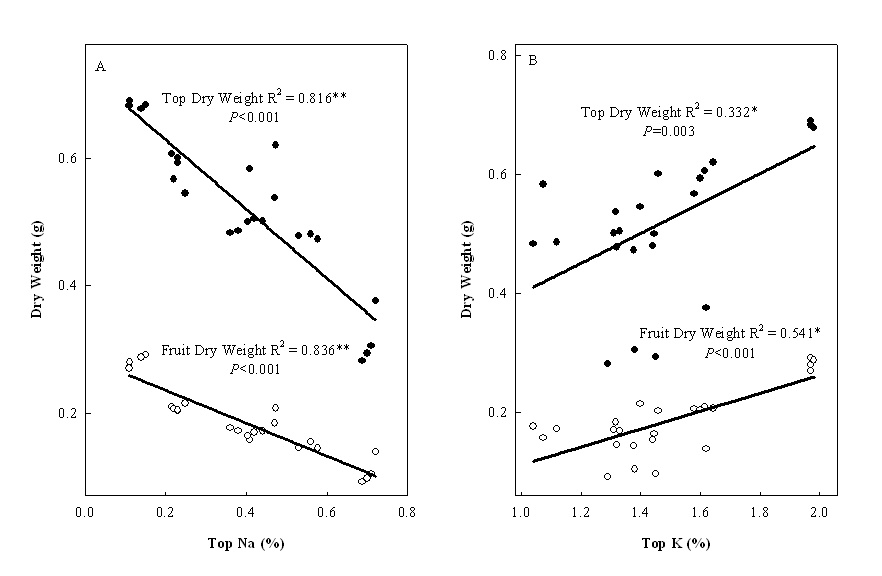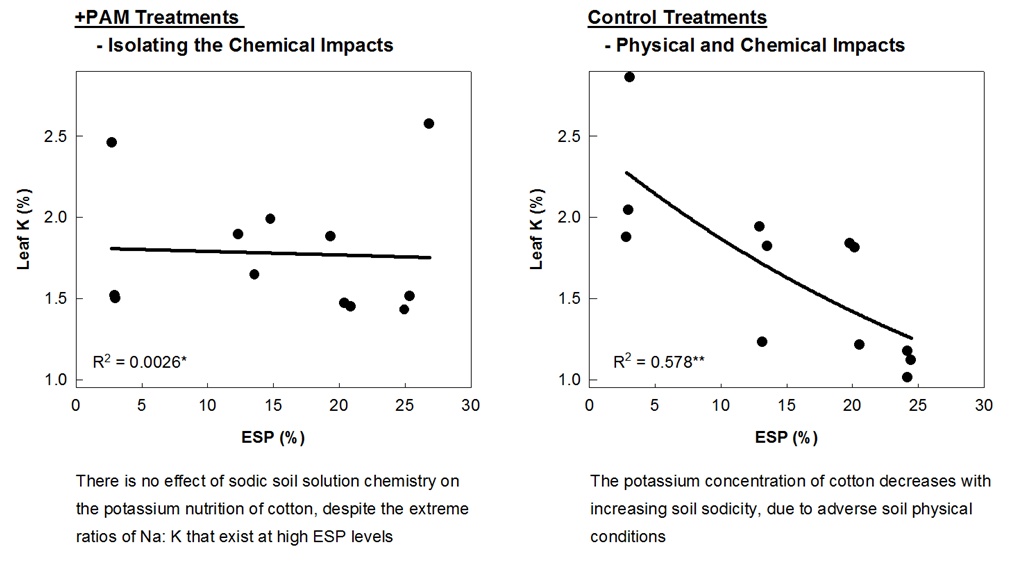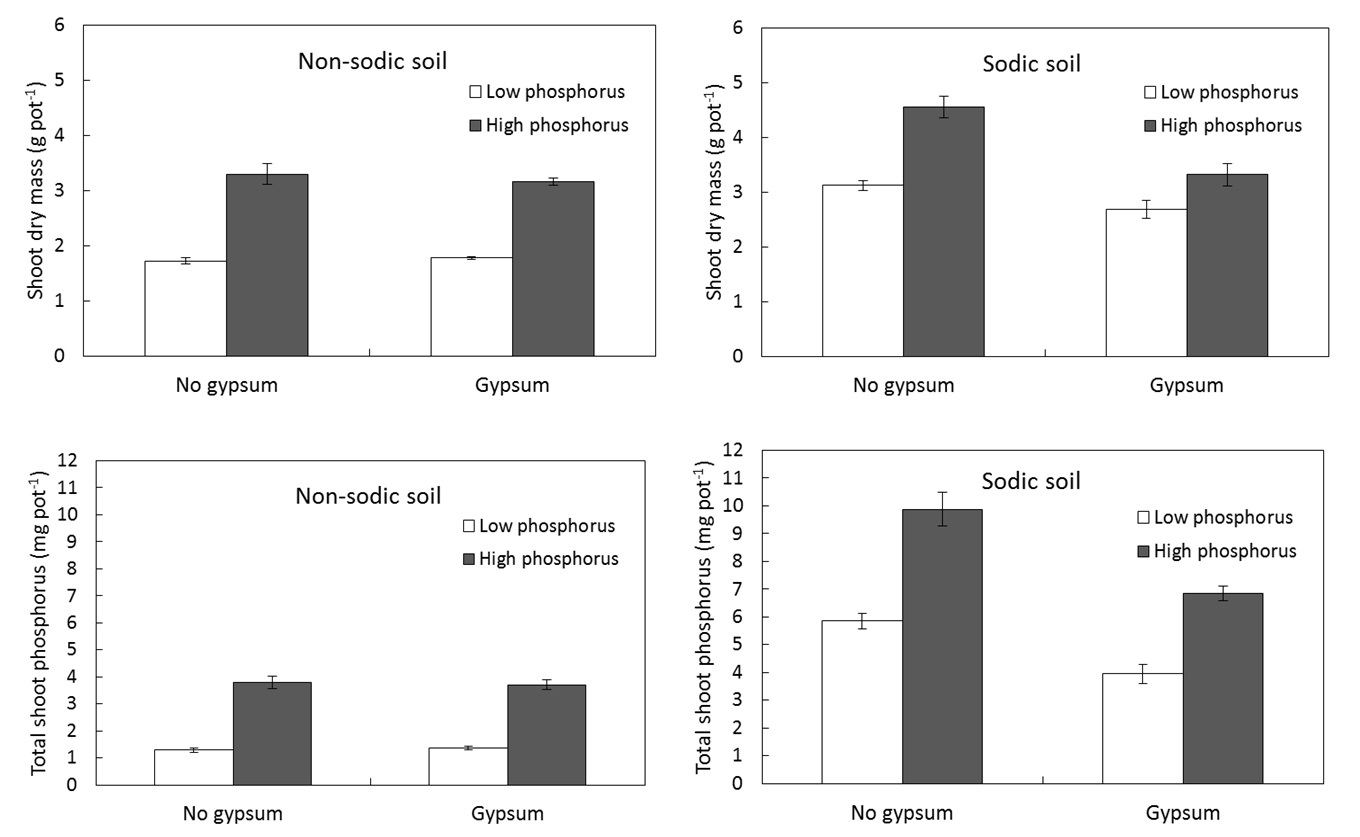Managing nutrition in sodic soils
Author: Chris Guppy, UNE | Date: 25 Feb 2015
Take home message
- Managing nutrition in sodic soils is involves improving soil physical conditions
- Waterlogging reduces root activity and decreases nutrient capture
- More research on improving soil physical conditions to rooting depths is needed
Introduction
Much of the research conducted at UNE investigating soil sodicity and managing nutrition has been undertaken in the context of cotton, so the results presented here are cotton related. How differently will cereals respond? The root systems vary considerably, but the physical conditions encountered and the consequences of those are similar. Management techniques that work for cotton are also going to improve growth of cereals.
When are we managing?
Technically, constraints arise above 6% exchangeable Na (Exchangeable Sodium Percentage). The reason yield is constrained varies with the amount of Na on soil exchange sites. Sodicity affects both the soil water chemistry (pH, solution Na, K and P, micronutrient availability) and the physical environment (higher bulk density, reduced porosity and drainage, poor infiltration, prolonged waterlogging). Separating these different effects of sodicity on plant growth became important because anecdotally, poor production in sodic areas of cotton fields was not overcome by simply increasing the N, P and K applied to those areas. Producers could not fertilise their way out of trouble. So perhaps more than nutrient management was needed.
In cotton field studies, as sodicity increased from 6-21%, yield fell by 36%; as it increased further from 21-31%, yield decreased a further 20%. Typically, as sodicity increased to near 30% cotton yield fell by half, Na in shoots and K decreased (Figure 1). The Na and K effects may lead one to conclude that there is too much Na in the soil water and the plant roots can’t see the K that is there. Simply adding more K should fix the problem. However, that is not what occurs in the field. Adding more K does not fix the problem. Perhaps physical effects are causing these nutrient shifts in the plants?
Dr Dodd developed a number of techniques to separate out these effects, overcoming the physical constraints of sodic soil by using poly-acrylamide (PAM). For example, the effect of PAM on that key indicator (leaf K in cotton) is presented in Figure 2. For the majority of sodic soils, taking away the physical constraints resulted in little effect on leaf K of increasing sodicity. Where physical constraints remained, leaf K fell below critical levels as sodicity increased. This suggests that the chemical environment a root encounters up to about 20-25% sodicity isn’t driving poor growth. From a management point of view, managing the physical environment may be the key. Managing the physical environment means improving infiltration and drainage, decreasing soil strength when dry and reducing the effects of waterlogging.

Figure 1. Sodicity reduces dry weight through increased tissue Na and decreased tissue K in the field.

Figure 2. Isolating the physical effects of sodicity on leaf K demonstrates the dominant role soil physical conditions play on management of sodic soil nutrition.
One effect of waterlogging on nutrition of cotton in particular, is that as roots become waterlogged, within 24 hours they lose the ability to actively take up nutrients (such as K and P) and lose the ability to discriminate against the presence of Na in soil water. Simply put, they can’t take up what they want, and become leaky to things that they don’t. Waterlogging may explain the higher Na uptake and reduced K uptake commonly observed in sodic fields.
To explore the effects of waterlogging, Dr Dodd used radioactive P to measure how long it took cotton plants to recover their ability to ‘actively’ take up nutrients after being waterlogged (Figure 3). In non-sodic soil, it took roughly 2 days to recover. Even when not waterlogged, poor physical conditions in moderately sodic soil restrict the rate at which roots could grow and find the added isotope P. However, in those moderately sodic soils, root recovery took more than twice as long following waterlogging. This is time in which Na would leak in, K leak out, and P and K not be taken up in a field situation. At higher sodicity, chemical and physical factors combine to reduce root growth and recovery. Waterlogging, and hence water management becomes critical in managing the nutrition of sodic soils.

Figure 3. Time until cotton root recovery occurs following waterlogging of non-sodic and sodic soils varies dramatically.
Recent work undertaken by Dr Rebecca Haling focussed on the P nutrition of cotton in sodic soils. Dr Haling confirmed earlier work that chemical conditions in moderately sodic soil (6-20%) do not adversely reduce cotton growth and that management of soil physical conditions is key. In fact, in the absence of waterlogging and with good surface water management, plants grown in sodic soil actually grew better due to higher solution P concentrations! Even in the presence of high bulk density and restricted root growth, cotton roots were able to compensate for smaller roots in the sodic soils by increasing uptake rates.
However, a final trial that investigated P and gypsum application to cotton grown in small pots produced interesting results (Figure 4). Among the constraints of working with Vertosol soils in pots is the tendency for them to shrink-swell their way out of the high soil strength conditions that would occur naturally in the field. In this trial, there was no high soil strength, and roots were unconstrained with respect to waterlogging or root extension and growth. It essentially became a chemical constraint experiment.
In the non-sodic soil, application of P increased growth as the Colwell P value was low, and both growth and P uptake improved. There was no effect of gypsum as the soils were not physically constrained. However, in the higher P fertility, sodic soil (ESP 20), application of gypsum reduced shoot growth and P uptake. This runs counter to accepted wisdom on the benefits of gypsum for dealing with sodicity. As the physical benefits of the gypsum were not required (note the higher shoot growth than the non-sodic soil), the gypsum may have resulted in unforeseen chemical constraints. In fact, solution P concentrations were reduced by 7-18%, perhaps through precipitation of Ca phosphate.

Figure 4. Growth and P uptake of cotton grown in sodic and non-sodic Vertosol in pots following application of P and gypsum.
What does it mean?
Nutrient availability in sodic soils with ESP less than 20 are affected by poor drainage and prolonged waterlogging. In dryland grain production research is needed into strategies that improve soil water drainage (and infiltration) to at least 30cm depth where the majority of nutrients are accessed. Limited research has been conducted into soil physical ameliorants outside of gypsum, and gypsum itself may have consequences for soil chemistry that are not fully understood. Incorporation of PAM, organic matter and gypsum, or combinations of these amendments, holds promise in managing sodic soil nutrition, purely as methods to improve root growth and soil physical conditions.
Acknowledgements
The Cotton CRC supported the work of Dr Dodd and CRDC supported the work of Dr Haling
Contact details
Chris Guppy
UNE
Agronomy and Soil Science
Ph: 02 6773 3567
Fx: 02 6773 3238
Email: cguppy@une.edu.au
Reviewed by
Dr Richard Flavel
Was this page helpful?
YOUR FEEDBACK
